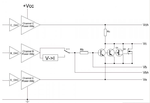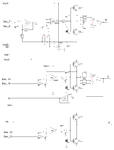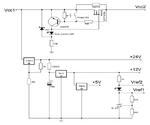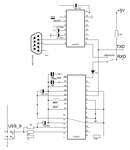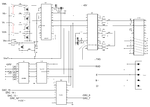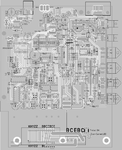locky_z
Newbie level 2
It use USB or RS232 interface communication with PC and show the semiconductor curve in PC screen.
It can measure BJT's Ic->Hfe curve

Can measure Vce-Ic curve

measure some semiconductor transmission curve,such as Vbe-Ic / Vgs-Id

also FET’s Vds-Id curve measure,Even can study Vgs & Rds relationship

Upper is six IRF630 Vds-Id curves,their Vgs is 5V 6V 7V 8V 9V 10V.
The Vds-Id curve only show Vds=0~1V range,so you can use system’s calculate function get the slope value,
The window in the central show six curve’s slope, Measurement unit is V/mA, multiplicate 1000 is Rds,
So under Vgs=10V,Rds is 0.000334649870637804*1000=0.334ohm
Some diode V->I curve

fllower is TL431 in all current range V-I curve

if you plug TL431 into socket B and E,and change the measure condition,you can see less current VI curve. The following figure , Y-axis is only 0~0.38mA

the Intelligent Curve Tracer is more powerful,It can measure 3 terminal voltage regulator’s Vi-Vo / Io->Vo Curve

It can measure BJT's Ic->Hfe curve

Can measure Vce-Ic curve

measure some semiconductor transmission curve,such as Vbe-Ic / Vgs-Id

also FET’s Vds-Id curve measure,Even can study Vgs & Rds relationship

Upper is six IRF630 Vds-Id curves,their Vgs is 5V 6V 7V 8V 9V 10V.
The Vds-Id curve only show Vds=0~1V range,so you can use system’s calculate function get the slope value,
The window in the central show six curve’s slope, Measurement unit is V/mA, multiplicate 1000 is Rds,
So under Vgs=10V,Rds is 0.000334649870637804*1000=0.334ohm
Some diode V->I curve

fllower is TL431 in all current range V-I curve

if you plug TL431 into socket B and E,and change the measure condition,you can see less current VI curve. The following figure , Y-axis is only 0~0.38mA

the Intelligent Curve Tracer is more powerful,It can measure 3 terminal voltage regulator’s Vi-Vo / Io->Vo Curve


